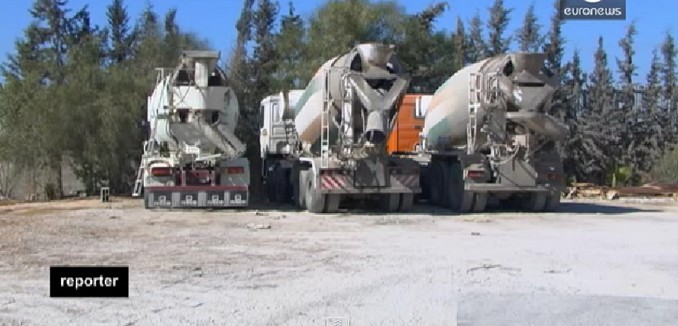While Israel has facilitated reconstruction efforts in Gaza, political infighting between the Palestinian Authority and Hamas has prevented supplies from reaching the people who need them, according to a report written by Neri Zilber and published by the Washington Institute for Near East Policy today.
Zilber writes:
According to the deal reached at war’s end, the prerequisite for any wide-ranging reconstruction was the Fatah-led Palestinian Authority returning to Gaza. The PA has shown no inclination to make good on its commitments, however, and Hamas has yet to relinquish real authority over the territory.
Zilber explains that in September the United Nations (UN) created the Gaza Reconstruction Mechanism (GRM) to ensure that materials needed for reconstruction – especially cement – would not be diverted for building tunnels or other elements of a terror infrastructure.
Zilber explains how GRM was to work:
From its inception, the GRM differentiated between two streams of reconstruction work: UN-related and PA-led. UN-affiliated construction projects, such as schools, clinics, and infrastructure supportive of basic utilities, would now be fast-tracked by Israeli authorities on a “Program of Works” scale (as opposed to the previous project-by-project basis, which often took months). The prewar UN-led portfolio for Gaza, which totaled approximately $650 million, was approved in September 2014 and has moved rapidly toward completion. An additional $1.5 billion was pledged at an October donor conference in Cairo, primarily for projects related to the UN Relief and Works Agency (UNRWA); according to UN officials, however, much of that funding has failed to materialize.
The PA was expected to lead the bulk of the GRM’s projects, with significant input from the Gaza private sector. These would include large public infrastructure initiatives (e.g., hospitals, schools, utilities) as well as private sector projects (e.g., factories). In theory, donor pledges were to be translated into specific projects, planned, overseen, and executed through the relevant PA ministries. To date, however, few if any of these projects have materialized due to the lack of PA government presence in Gaza. With no PA officials around and the local ministries still controlled by Hamas, the technical obstacles continue to be prohibitive — never mind the political obstacles for the PA and international community of directly rebuilding Gaza for Hamas.
The PA’s lack of involvement in the process was underscored by Robert Serry, the UN official in charge of GRM, who stated, “we need a [Palestinian] government…that is able to take responsibility…We have a [UN] mechanism that is working, but almost everything else is not in place.”
On the other hand, Zilber observes that Israel “gave its consent to the above framework, easing the entry of construction materials into Gaza, permitting the exit of more Gazan residents and goods bound for the West Bank, and fast-tracking most proposed projects.”
Zilber’s report today reflects a dynamic he first reported in December, in which “Israel, of all the parties involved, has shown the greatest degree of flexibility towards a Gaza Strip still ruled by Hamas.” Last month, Avi Issacaroff also reported that the PA and Hamas were busy maneuvering for greater political power rather than doing much to promote reconstruction.
[Photo: euronews (in English) / YouTube ]




